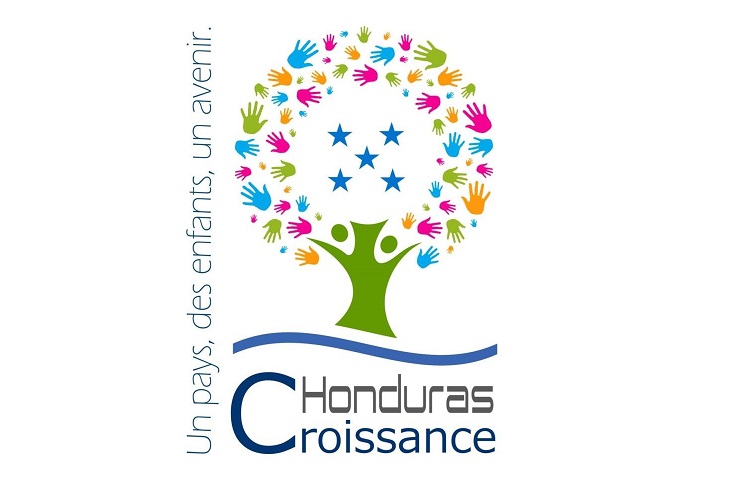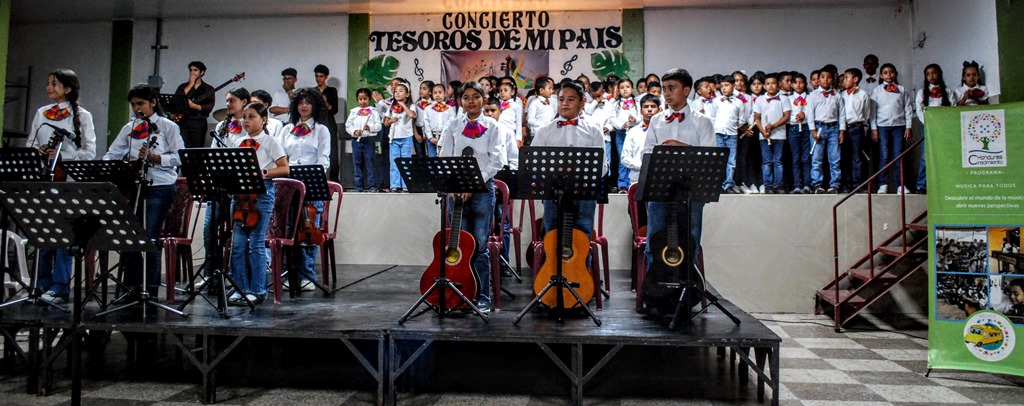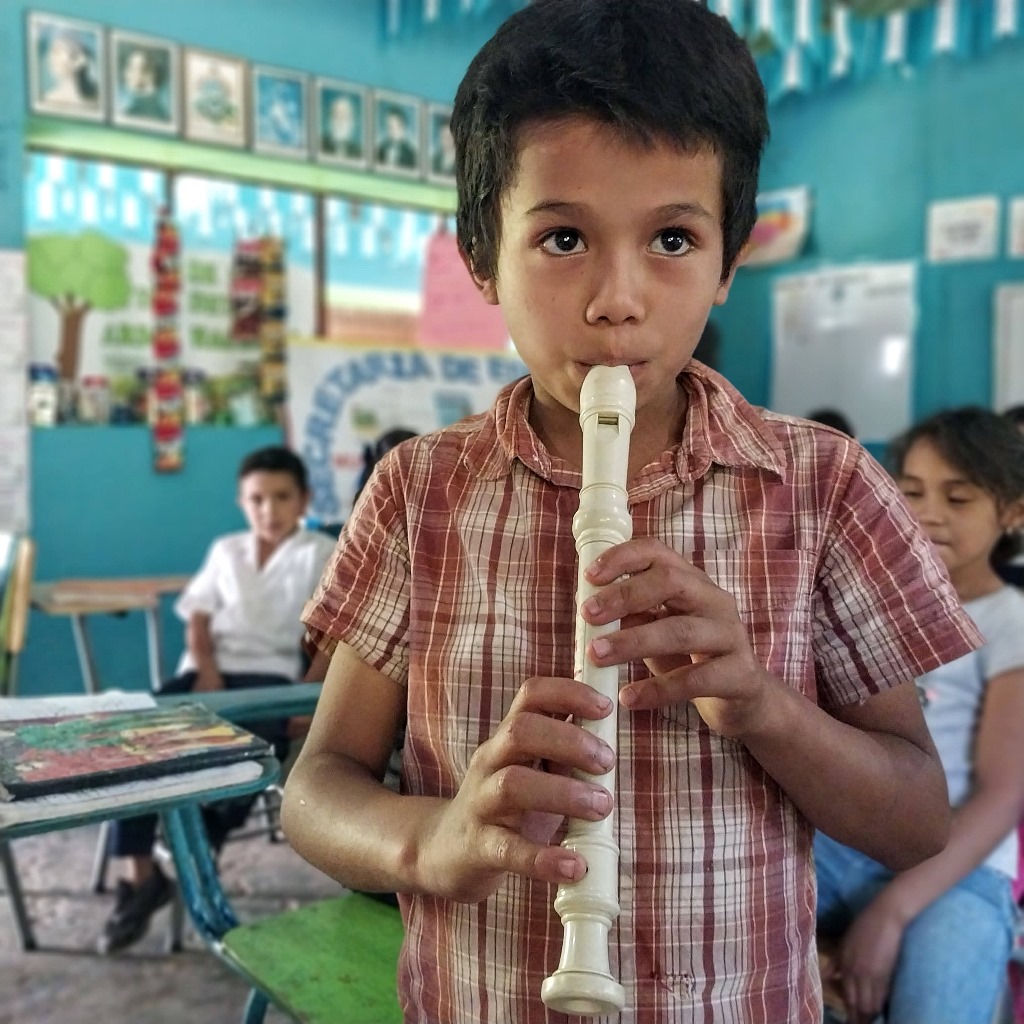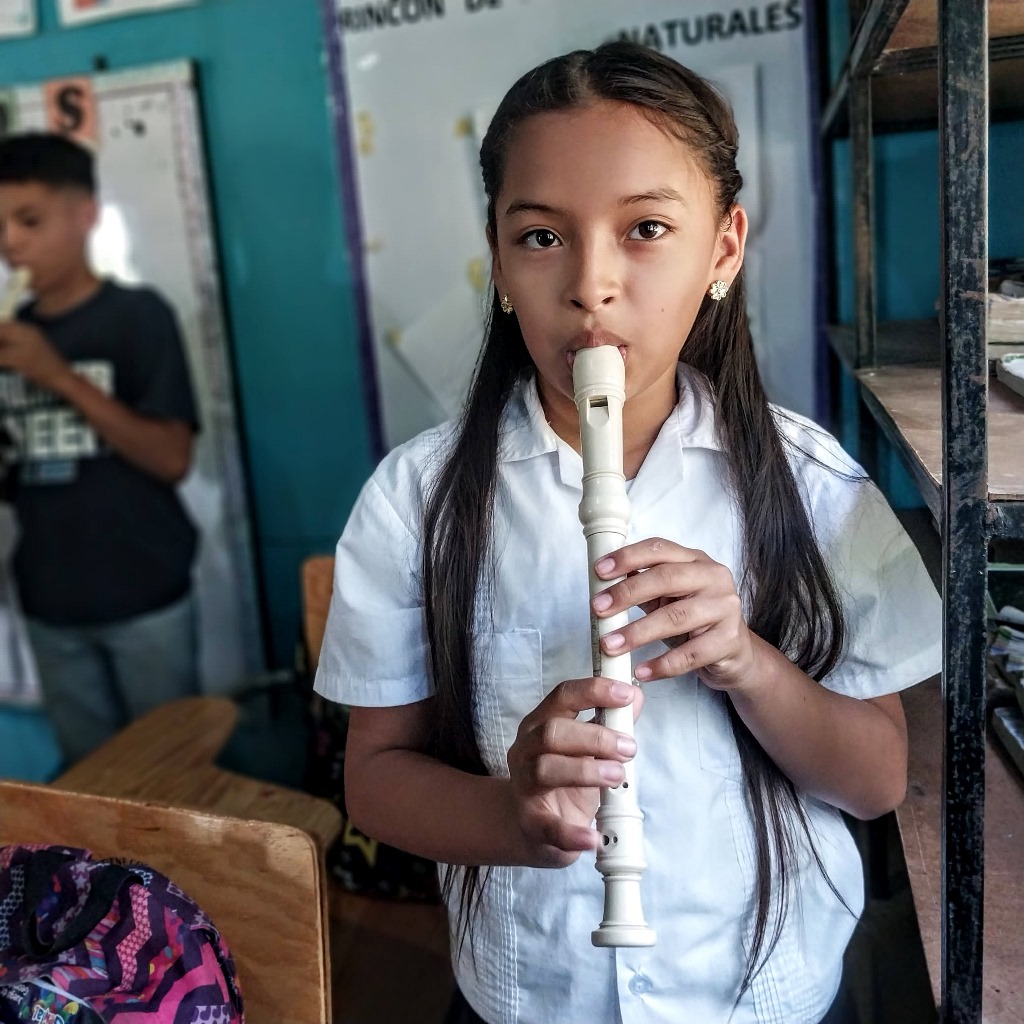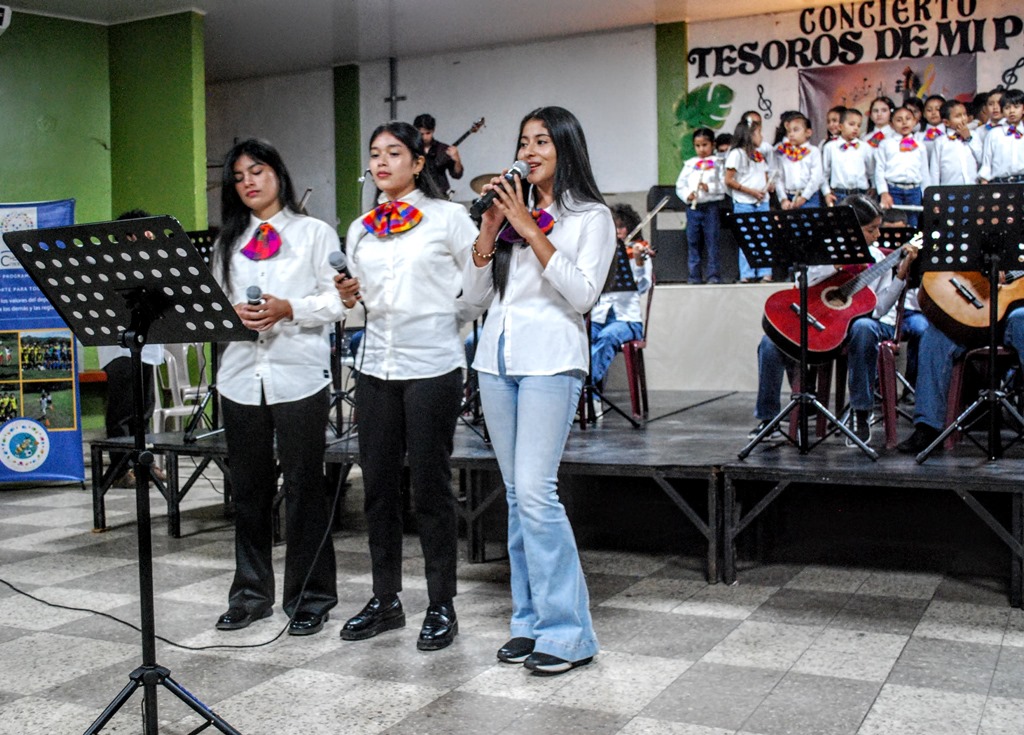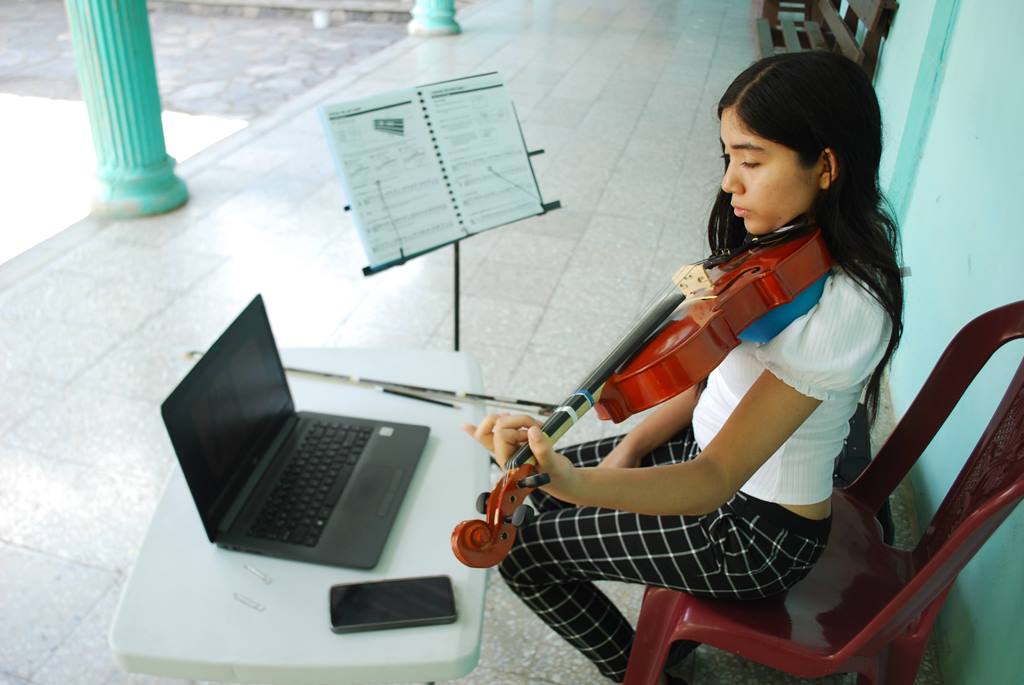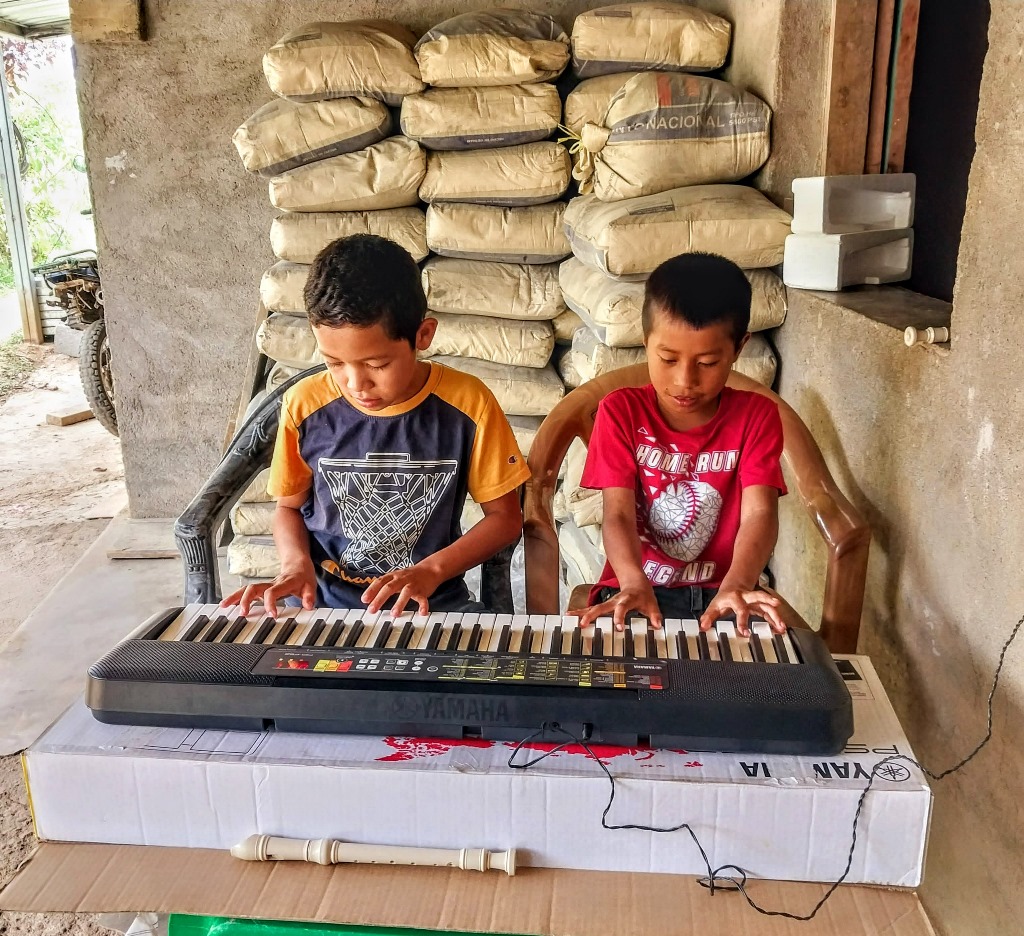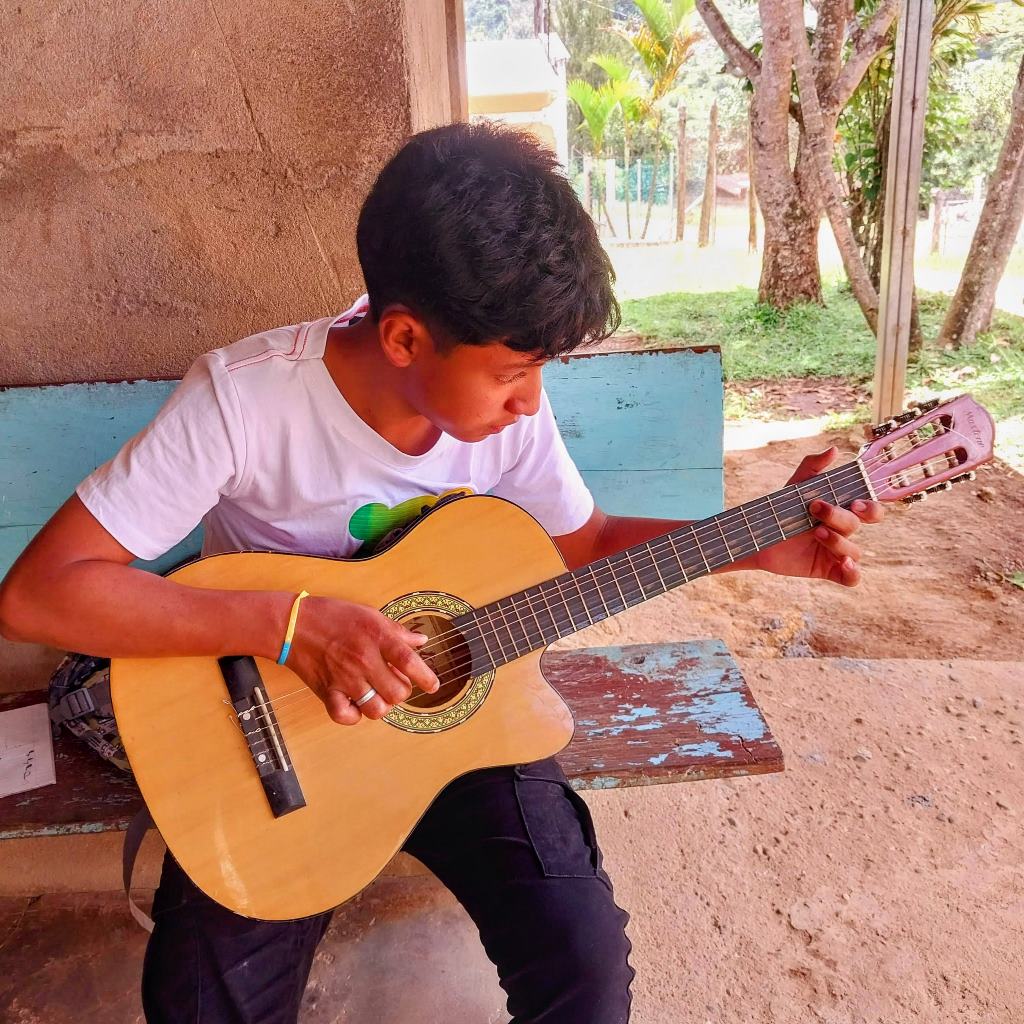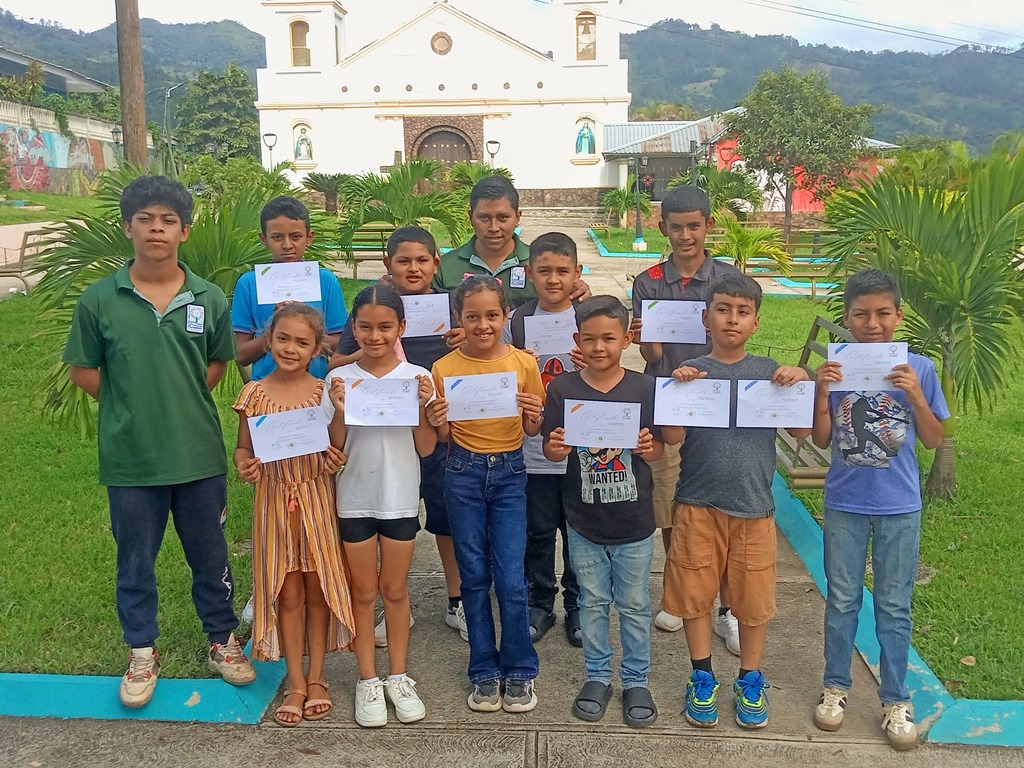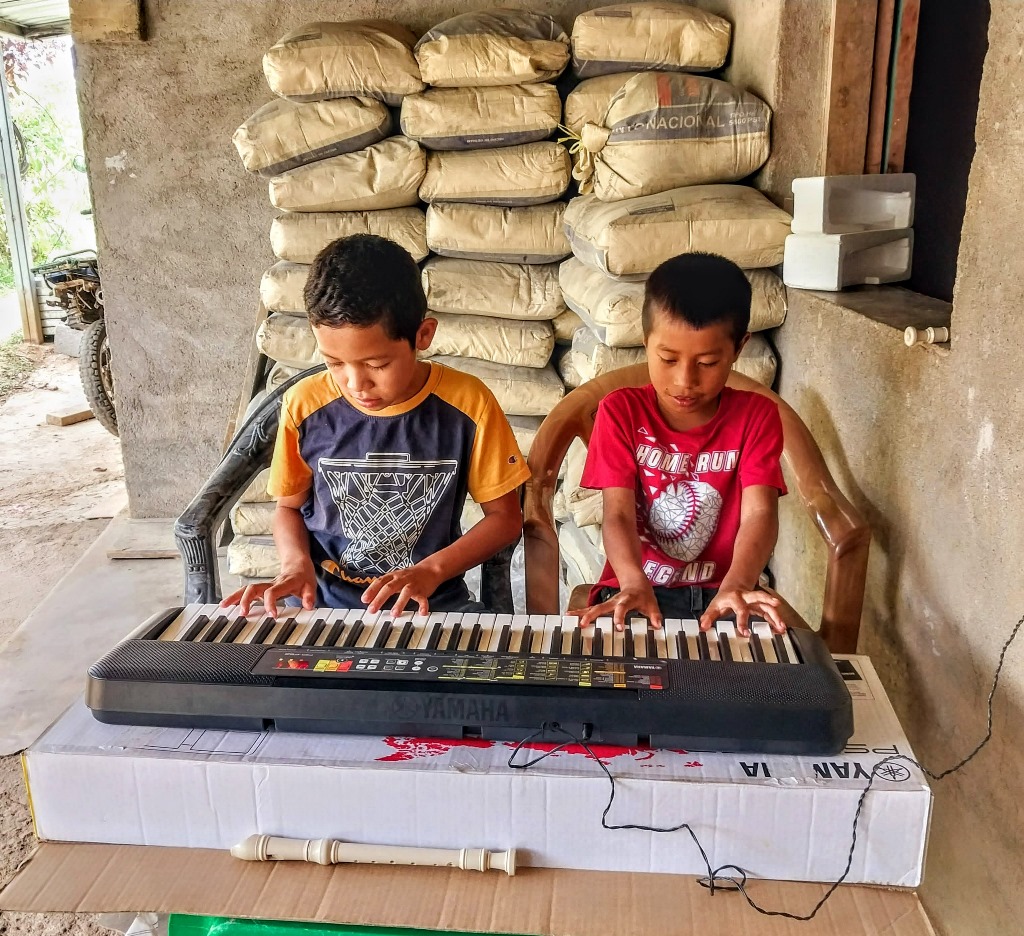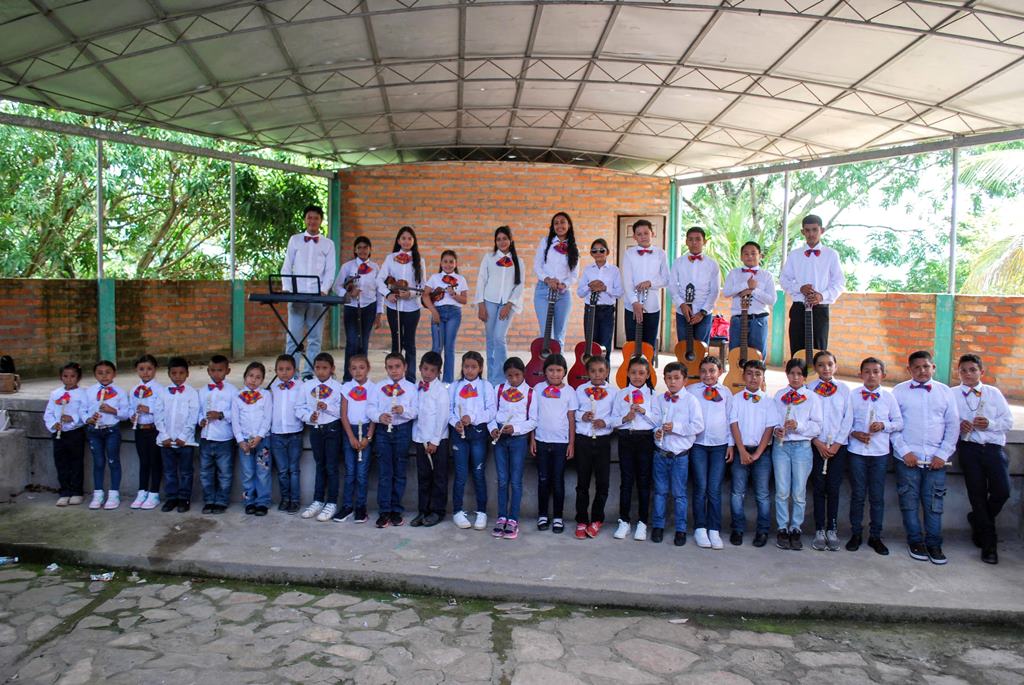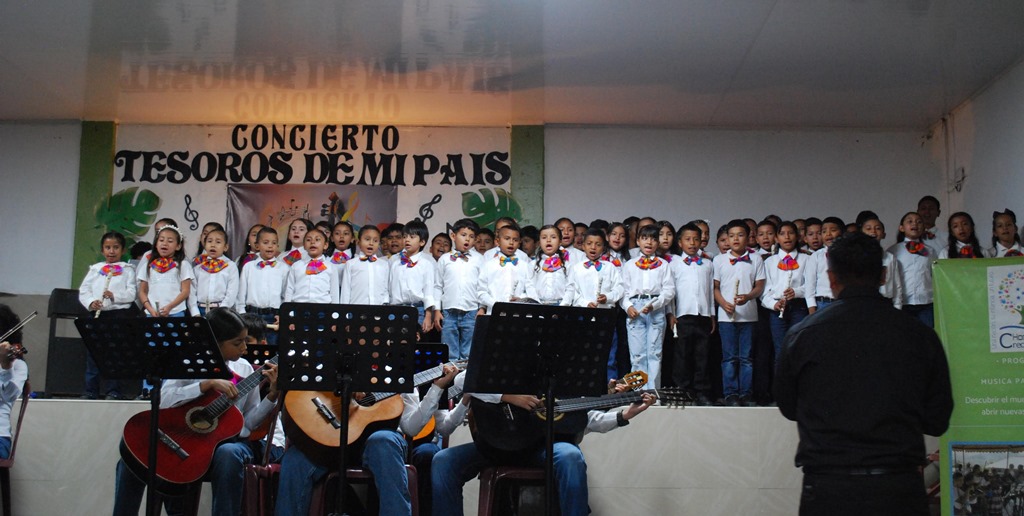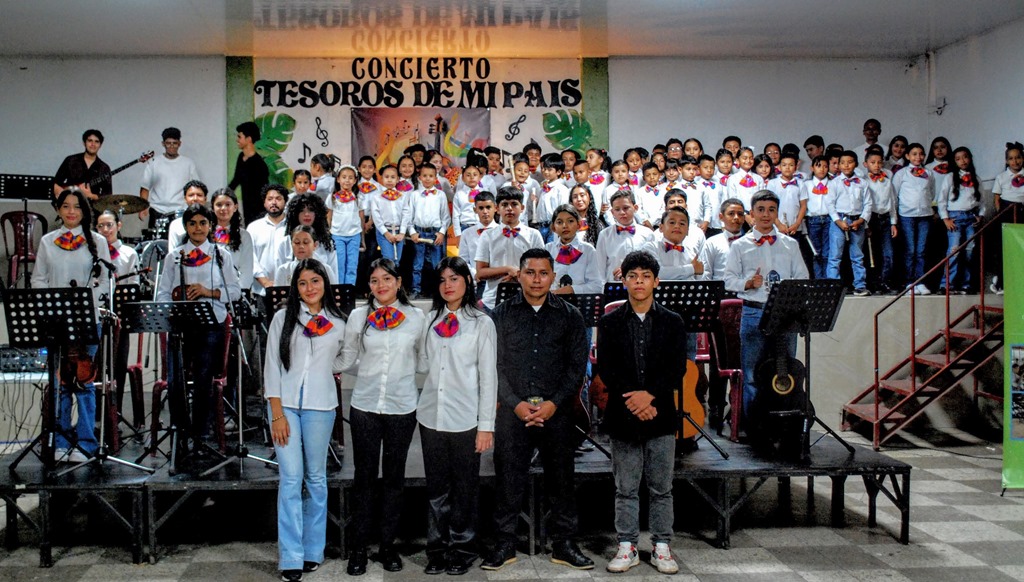Music for All
Discipline, self esteem, the pleasure of playing music with others and using the discovery of other cultures as an educational tool and as an engine for a better future..
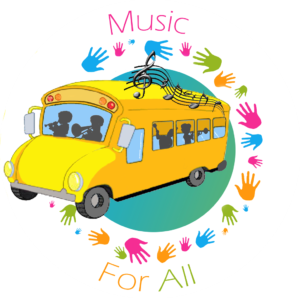
History
Music for All began in 2011 as a musical event organized as part of the activities of the Constructors of Hope educational program.
The musical event was successfully embraced by the children of Taulabé, which motivated us to open a marimba workshop as an educational activity to promote and perpetuate the musical heritage of the area.
Gradually, in 2013, we expanded our musical offerings with recorder classes. Then, in 2015, we introduced the violin, and in 2019, we opened choir and guitar classes.
Virtual music education was introduced in 2018 with violin classes taught from Spain. The implementation of virtual communication prepared us to face the contingencies of the pandemic. From 2020 to 2022, the program was able to continue teaching music classes virtually.
Now, in 2025, the program consists of five learning centers and 170 students in three municipalities.
Program objectives
- To offer students artistic training
- Enrich their cognitive abilities.
- Provide tools for emotional and psychological resilience through music.
- To open up spaces for social cohesion,
- Offer a musical activity for students’ leisure time.
Model
The program is a mobile model, the basis of all Honduras Crecimiento programs. This model aims to facilitate access to different educational opportunities for students in rural areas. The program is currently being implemented in five learning centers in the municipalities of Taulabé, San José de Comayagua, and Siguatepeque:
- Two cultural centers in Taulabé and San José de Comayagua,
- Three schools in the municipalities of Taulabé, San José de Comayagua, and Siguatepeque
Cultural centers in Taulabé and San José de Comayagua
Students attend music classes in the afternoon, outside of school hours, for group and individual lessons.
Students enrolled in the program at the Liberación Institute in Taulabé or the Superación Institute in San José de Comayagua, from 7th to 9th grade, receive 30% of their academic grade in music for their participation in the Honduras Crecimiento program.
Schools in the municipality’s communities
Students receive choir, recorder, and musical instrument lessons during school hours, usually in the morning.
After the enrollment period, during which students register for free, the school year begins in February and ends in December. As part of their academic preparation, an annual recital and at least two concerts are organized each year, with the Christmas concert serving as the closing event of the year.
Institutional staff
The program has an operational, administrative, and strategic team that performs the tasks necessary for its operation, improvement, and expansion.
- A team of four permanent teachers and student teachers from the UNAH music degree program teach classes during the academic year.
- A program manager performs administrative, accounting, organizational, and supervisory tasks.
- An academic council composed of four people is responsible for the program’s design and technical and strategic advice.
- A communications team of six people is responsible for publicizing the program’s activities.
Work methodology
Music study is structured into six levels.
- Flute 1 and choir
- Flute 2, choir, and introduction to the instrument
- Level 1
- Level 2
- Level 3
- Level 4
Flute 1 and choir training provides students with the musical literacy necessary to lay a solid foundation prior to studying a musical instrument.
In the second year, students continue with the recorder and take their first steps in learning a musical instrument. At this stage, students can choose from the following instruments: violin, viola, guitar, and piano.
In the third year, students develop their instrumental skills by increasing their music learning hours:
- Instrument 30/45 minutes
- Choir 1 hour
- Group music 2 hours.
From the fourth to sixth year, students can become tutors, sharing their knowledge with younger children. This experience trains them in music education.
The training for each level is based on a curriculum studied and established by members of the academic council.
The program gives former students the opportunity to join the orchestra and continue to develop their musical skills.
Educational activities
Concerts are scheduled at the end of the first and second semesters of the year. These concerts are part of the educational training and are a time when students from different Honduras Crecimiento learning centers come together to perform pieces that were studied separately during the same period.
Recitals are when students perform individually in front of an audience of family and friends. It is a time for testing and stage training.
The presentation of certificates is the moment when students validate their semester of learning.
Actors
Parents
Parents play an important role in music education. Regular meetings are held at the beginning of the school year to present the calendar of activities: concerts, recitals, certificate ceremonies.
They are asked for their support:
- in monitoring the homework assigned to students to be done at home.
- in organizing concerts
- and other social activities in the program.
School and high school teachers
The teaching staff at primary and secondary schools play an important role in the music learning process. They coordinate classes and educational events with the Honduras Crecimiento team.
